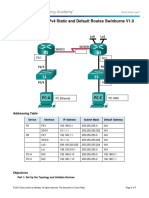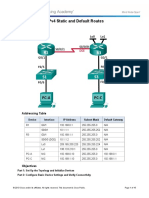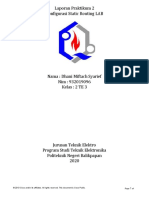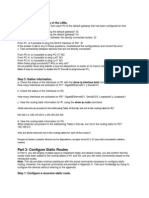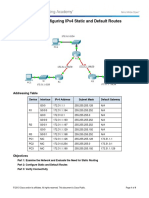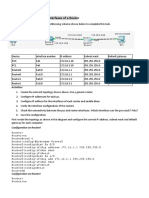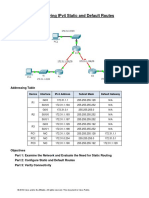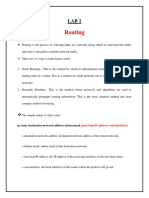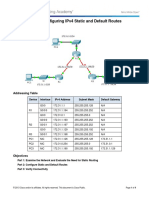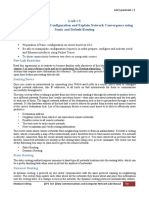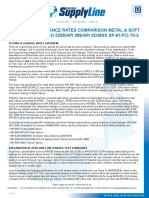0% found this document useful (0 votes)
157 views21 pagesModule 4 Routing Configuration
The document summarizes the steps to configure static and default routes on routers R1, R2, and R3. It involves:
1) Configuring IP addresses and testing basic connectivity between the routers.
2) Configuring static routes on R2 to reach networks behind R3, and testing the routes work.
3) Configuring backup static routes on R2 in case the primary routes fail.
4) Configuring a default route on R1 to reach the network behind R3, and testing connectivity works over the new default route.
Uploaded by
wissalwissouCopyright
© © All Rights Reserved
We take content rights seriously. If you suspect this is your content, claim it here.
Available Formats
Download as DOCX, PDF, TXT or read online on Scribd
0% found this document useful (0 votes)
157 views21 pagesModule 4 Routing Configuration
The document summarizes the steps to configure static and default routes on routers R1, R2, and R3. It involves:
1) Configuring IP addresses and testing basic connectivity between the routers.
2) Configuring static routes on R2 to reach networks behind R3, and testing the routes work.
3) Configuring backup static routes on R2 in case the primary routes fail.
4) Configuring a default route on R1 to reach the network behind R3, and testing connectivity works over the new default route.
Uploaded by
wissalwissouCopyright
© © All Rights Reserved
We take content rights seriously. If you suspect this is your content, claim it here.
Available Formats
Download as DOCX, PDF, TXT or read online on Scribd
/ 21


